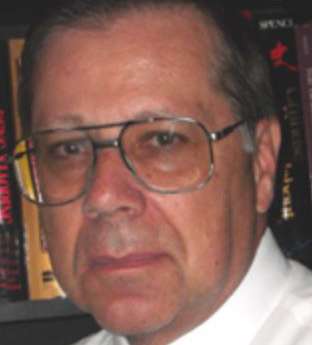
By JOHN RICHARD SCHROCK
When AT&T and Verizon activated their 5G networks on January 19, 2022, with some provisions to avoid interference with airline devices, it finally occurred to some observers just how far behind the United States is in 5G technology. The original research into 5G started in South Korea and the United Kingdom over a decade ago, but China soon moved ahead in 5G development with Huawei developing the first full range of 5G equipment. Before I returned from lecturing in China well before the pandemic, some Beijing citizens were enjoying the luxuries of 5G on their new cell phones.
The ten-times more powerful 5G could partly solve the problem that many students worldwide experienced in Zoom meetings: low visual resolution. I attend school board meetings in person because I can read the eyes of participants—their pupils show whether they agree or disagree during discussions. But with current screen reading, that detail is missing. Online remains inferior to “being there.” But 5G could provide the resolution needed to read eyes and detect subtle responses, one critical advantage of face-to-face teaching. The U.S. is not there yet.
Americans also hear that our problem with 5G interference with airline equipment is not a problem in Europe and Asia. This is where we learn how our U.S. system of communications regulation has problems and how the rest of the world is ahead of us. There are no problems with airliners landing in Berlin or Beijing because they are again using technology better. And they do not rely on private industry competition to interfere with safety. Their 5G wavelengths with mostly Huawei equipment avoided interfering with airliner devices from the start. This situation is very similar to the high-definition televisions that existed in Europe and East Asia for over a decade before the U.S. finally adopted HDTV.
According to CFR Research in 2021, the “...principal reason that the United States has not had more success in persuading countries not to use Huawei equipment is that it cannot offer an alternative. The United States does not and will not have a company that is competitive in the full stack of 5G equipment.”
Meanwhile, a just-released report by our National Science Foundation (NSF), The State of U.S. Science and Engineering 2022, now confirms China has overtaken the United States as world leader in total annual science papers published and patents awarded.
This report admits the U.S. cannot afford to fund research to maintain or regain leadership in every field. But it is critical to maintain much basic research, support high-quality K–12 science and math education, and keep borders open to promote international partnerships.
The United States fell behind China in contribution to global research spending growth over the past 2 decades: China (29%), United States (23%), South Korea-Japan (9%), other Asia (7%), European Union (17%) and all others (14%). This NSF report notes the “global concentration of R&D performance continues to shift from the United States and Europe to countries in East-Southeast Asia and South Asia.”
Our percent of scientists and engineers with doctorates now working in the U.S. that were born overseas: computer sciences and math (60.3%), engineering (57.1%), life and agricultural sciences (50%), physical and earth sciences (42.4%) and social and behavioral sciences (20.6%). Our “STEM workforce relies heavily on foreign-born individuals, who account for about one-fifth of the STEM workforce (and higher proportions in certain fields). Among our foreign-born STEM workers with a S&E degree, about 50% are from Asia, with most from India or China.”
The NSF report blasts U.S. K–12 science education, but provides no specific reforms.
The one statistical error in this report is their assertion that “the United States awards the most S&E doctorates worldwide.” China surpassed the U.S. back in 2007 and will annually produce twice as many STEM doctorates in 2025 as the U.S., as documented in the Georgetown Center for Security and Emerging Technology report.
. . .
This new NSF report is at: https://ncses.nsf.gov/pubs/nsb20221
John Richard Schrock has trained biology teachers for more than 30 years in Kansas. He also has lectured at 27 universities in 20 trips to China. He holds the distinction of “Faculty Emeritus” at Emporia State University.





